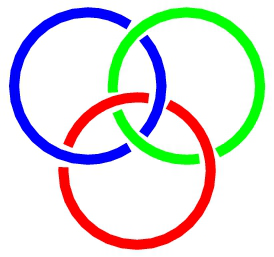Orateur
Dr
Mario Gattobigio
(Institut Non Lineaire de Nice - Universite de Nice)
Description
The Hyperspherical Harmonic (HH) method has been widely used in nuclear
physics to describe nuclei with A=3,4 [1].
The extension to larger systems is hampered by the large degeneracy of the HH
basis. The construction of specifically anti-symmetric states reduces the
dimensionality of the basis but encounters technical and numerical
difficulties.
The coefficients of anti-symmetric basis elements, constructed as a linear
combination of HH basis elements times appropriate spin-isospin vectors, are
the more difficult to obtain the larger the number of basis elements and/or
the number of particles considered; however, once the basis has been
anti-symmetrized, the solution of the Schroedinger equation becomes much
easies because the potential energy matrix elements can be
calculated efficiently.
In the present talk we would like to discuss the possibility of using the HH
method without resorting to the construction of anti-symmetrized basis
states.
The obvious disadvantage of the proposed approach is in the very large basis
that one needs to handle, which has to be balanced with the simplicity of
avoiding the initial construction of anti-symmetric basis states; the physical
basis states, having the desired symmetry, are automatically generated in the
diagonalization of the Hamiltonian.
Preliminary results for the discrete states of A=3,4 systems will be shown
using a simple nucleon-nucleon potential.
[1] A. Kievsky, S. Rosati, M. Viviani, L.E. Marcucci, and L. Girlanda;
J. Phys. G: Nucl. Part. Phys. 35 (2008) 063101
Auteur principal
Dr
Mario Gattobigio
(Institut Non Lineaire de Nice - Universite de Nice)
Co-auteurs
Prof.
Alejandro Kievsky
(INFN - University of Pisa)
Prof.
Michele Viviani
(INFN - University of Pisa)
Dr
Paolo Barletta
(UCL - London)

